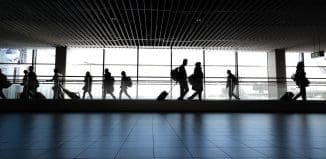TSA Lets Weapons Slip Through Screening 95% Of Cases
This post is also available in:  עברית (Hebrew)
עברית (Hebrew)
Since its creation almost 14 years ago, in the wake of the September 11 attacks, the Transportation Security Administration (TSA) has had one goal and one goal only: to provide security in transportation. A decade and a half since it still fails to perform.
As frequent headlines show, the TSA has been far from effective at apprehending suspects, relying, more often than not, on sheer luck to prevent the next terrorist attack, but no posturing or outcry has been quite as damning as a new report from the Department of Homeland Security’s Inspector General. The office of the Inspector General, acting as an internal department watchdog, shared parts of the report with the US House Committee on Oversight and Government, and it does not look good for the agency.
Jennifer Grover, of the Government accountability Office, told the committee that the “TSA has consistently fallen short in basic program management.”
The Inspector General sent agents and auditors, with no special training in smuggling or counterintelligence, to several airports around the US. The goal was simple – to asses how well can the TSA’s screening agents prevent a bomb or gun being brought aboard a flight. The results: not well at all. 95% of auditors were successful in smuggling bombs and guns into airports’ secure areas, with the failures being consistently spread out across every airport.
Inspector General John Roth had this to say to the committee:
“Our testing was designed to test checkpoint operations in real world conditions. It was not designed to test specific, discrete segments of checkpoint operations, but rather the system as a whole. The failures included failures in the technology, failures in TSA procedures, and human error. We found layers of security simply missing. It would be misleading to minimize the rigor of our testing, or to imply that our testing was not an accurate reflection of the effectiveness of the totality of aviation security.”
The TSA’s Screening Passengers by Observation Techniques program, which includes 2,800 employees and costs of $878 million from 2007 to 2012, is “expensive and ineffective,” according to the Inspector General’s statement.
“In looking at the number of times people got through with guns or bombs in these covert testing exercises it really was pathetic. When I say that I mean pitiful,” said Rep. Stephen Lynch (D-Mass.) at the committee hearing.






























